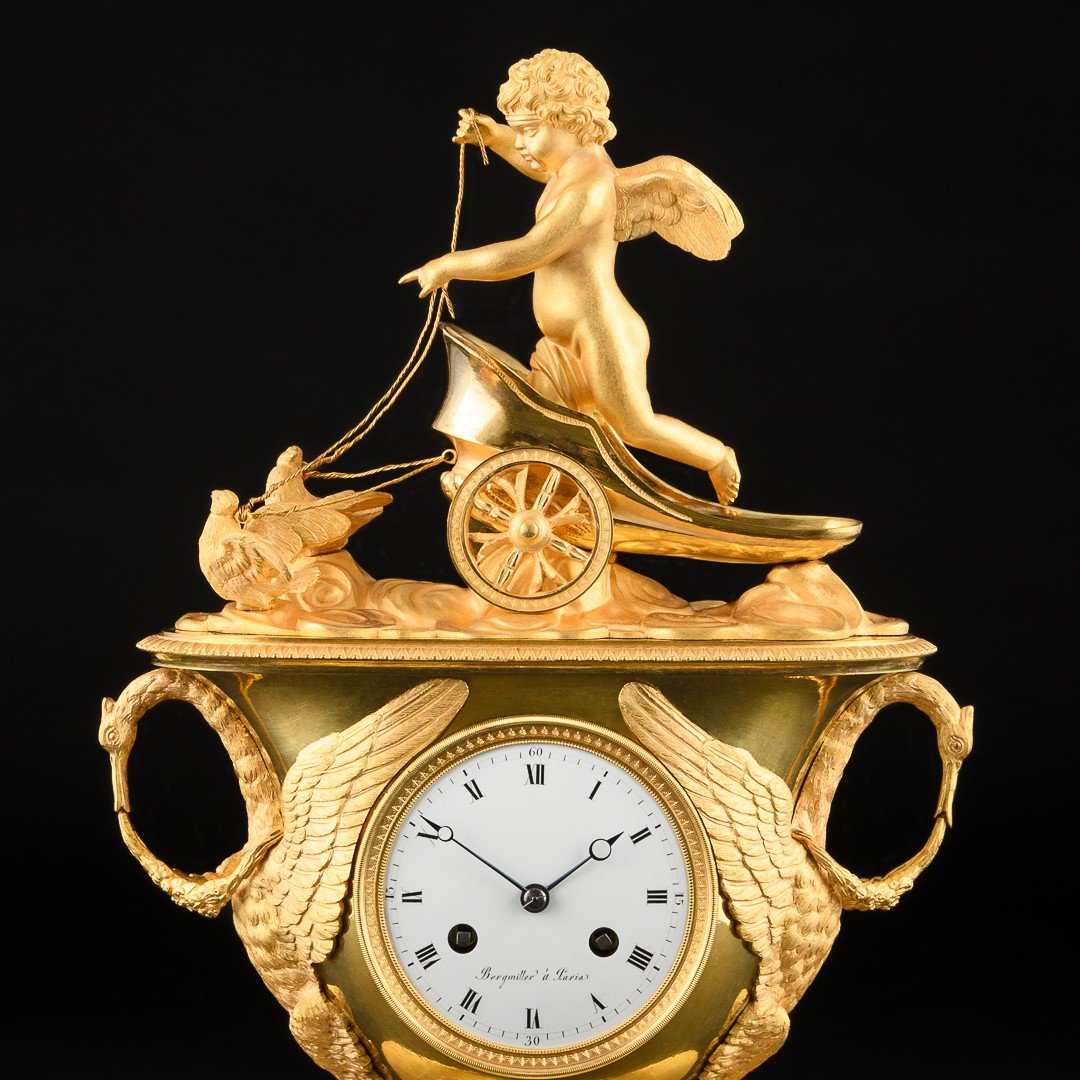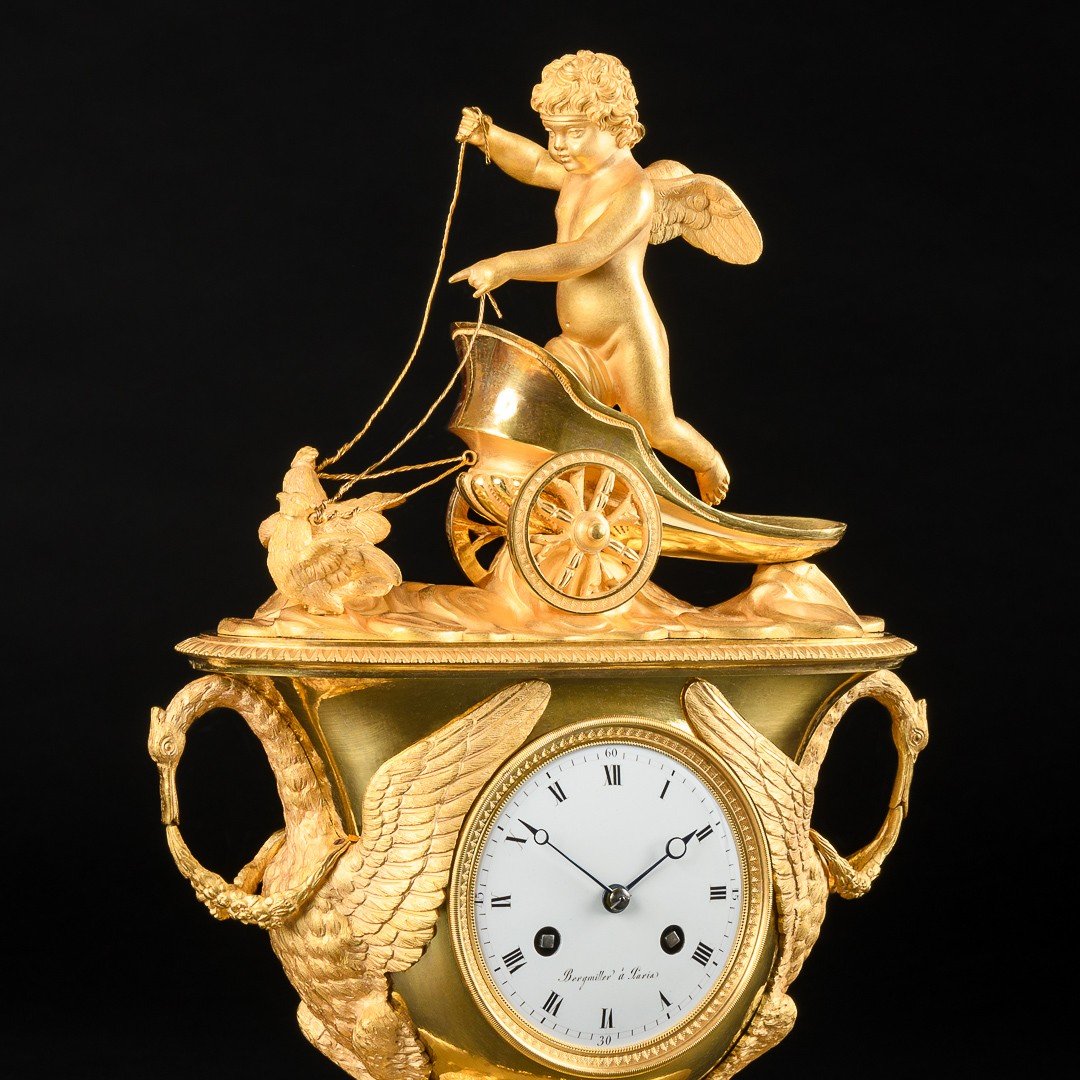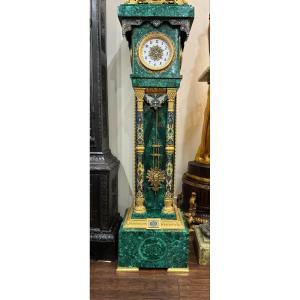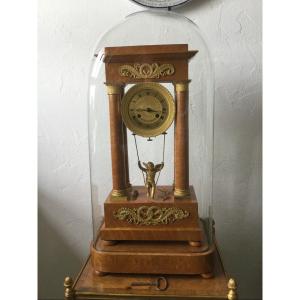See our website for more detailed photos: LINK
We send this article worldwide, professionally packaged, with registered and fully insured shipping at a fair price.
This museum-quality gilt bronze Empire mantel clock exquisitely depicts a winged Eros guiding a chariot drawn by doves across the clouds. In Greek mythology, doves are closely associated with Aphrodite, the goddess of love, known as Venus in Roman mythology.
This clock masterfully combines elements from two distinct styles: chariot clocks and vase clocks. At the top, Eros is seen guiding the love chariot, with reins in hand, as it glides on clouds. Below this, the vase-shaped body is adorned with swan neck handles, crafted with graceful detail. The clock movement is housed within, featuring a white enamel dial with gilt bronze hands. The bezel around the clockwork is elegantly encircled with finely chiselled beads and palmettes.
The dial is flanked by two intricately sculpted swans with outspread wings, each holding garlands of flowers in their beaks, forming the vase handles. The swans anchor themselves to the base of the vase, which rests on an oval platform decorated with water leaves. The base is further embellished with symbols of Eros, including a bow, quiver of arrows, a torch, and leafy branches, and is supported by four flattened-ball feet.
Inspired by antiquity, the simple and elegant forms of the Empire period often drew from Greek and Roman amphorae and urns. This clock embodies the purity of form and the use of iconic Empire motifs such as eagles, snakes, doves, and swans. The decorative objects from this period are celebrated for their elegance and the remarkable delicacy of their design and chiselling.
This exceptional Empire mantel clock has been professionally cleaned and remains in an outstanding state of preservation, retaining its original mercury gilding.
The movement has a pendulum with silk suspension and anchor escapement and strikes the hours and half hours on a bell regulated by a count wheel. Recently serviced and in perfect working condition. Complete with pendulum, key, and bell.
Origin: France circa 1810.
Dimensions: 42.5 cm (16.7″) high, 25.5 cm (10″) wide and 13 cm (5.1″) deep.
Literature
- Pierre Kjellberg, “Encyclopédie de la pendule française”, p.377 #C.
- Elke Niehüser, “French bronze clocks”, p.128 #208.























 Le Magazine de PROANTIC
Le Magazine de PROANTIC TRÉSORS Magazine
TRÉSORS Magazine Rivista Artiquariato
Rivista Artiquariato
